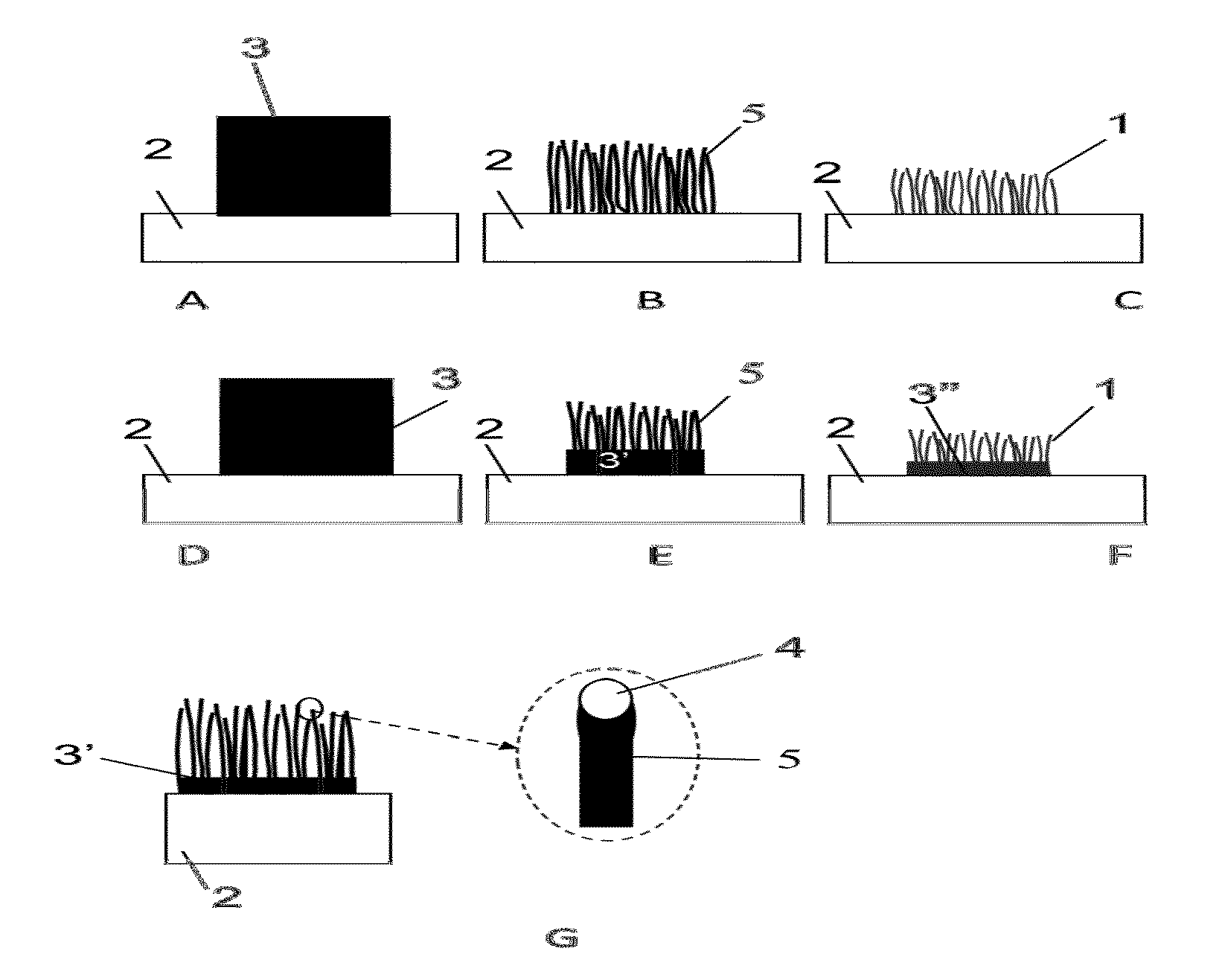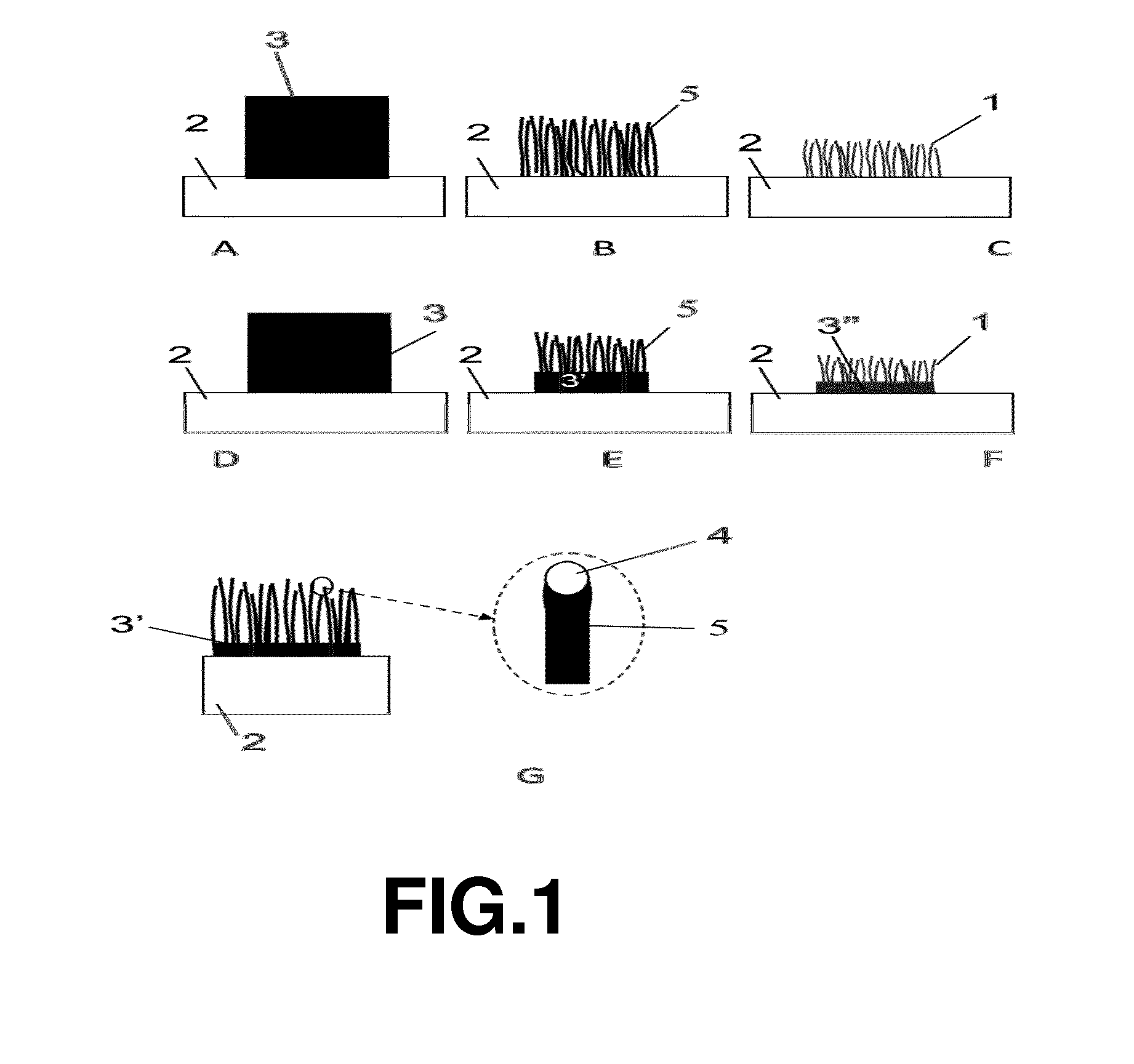Hierarchical Carbon Nano and Micro Structures
a technology of carbon nano and microstructure, which is applied in the direction of yarn, transportation and packaging, synthetic resin layered products, etc., can solve the problems of not facilitating the fabrication of high aspect ratio structures obtaining anisotropic properties, the existing fabrication methods of pyrolysed nanowires are not compatible with standard microfabrication techniques, and the inability to manufacture nanowires
- Summary
- Abstract
- Description
- Claims
- Application Information
AI Technical Summary
Benefits of technology
Problems solved by technology
Method used
Image
Examples
example
[0198]The CNW fabrication process began by the patterning of su-8® microstructures by standard UV photolithography (FIG. 3A top). Su-8 is a negative photoresist that is commonly used to fabricate high aspect ratio microstructures, and does not reflow during pyrolysis. Next, the sample was exposed to a harsh O2 plasma treatment (5-60 min, 300 w, 200 sccm O2, 150 mtorr in an 8″ tempress ml 200 plasma etcher), which establishes the anisotropic nanowire texture of the su-8 (see FIG. 3A middle). Without behind bond by theory, we believe different mechanisms enabling the formation of su8 nanowires are possible. First, su8® photoresist contains antimony, which is accumulated at the surface upon plasma etching, and can reach up to 19% of the surface composition of our samples after plasma treatment as observed through xps (x-ray photoelectron spectroscopy) analysis (see table 1). Antimony, together with small amounts of aluminum that are sputtered from the plasma chamber can locally mask th...
PUM
| Property | Measurement | Unit |
|---|---|---|
| Length | aaaaa | aaaaa |
| Length | aaaaa | aaaaa |
| Length | aaaaa | aaaaa |
Abstract
Description
Claims
Application Information
 Login to View More
Login to View More - R&D
- Intellectual Property
- Life Sciences
- Materials
- Tech Scout
- Unparalleled Data Quality
- Higher Quality Content
- 60% Fewer Hallucinations
Browse by: Latest US Patents, China's latest patents, Technical Efficacy Thesaurus, Application Domain, Technology Topic, Popular Technical Reports.
© 2025 PatSnap. All rights reserved.Legal|Privacy policy|Modern Slavery Act Transparency Statement|Sitemap|About US| Contact US: help@patsnap.com



